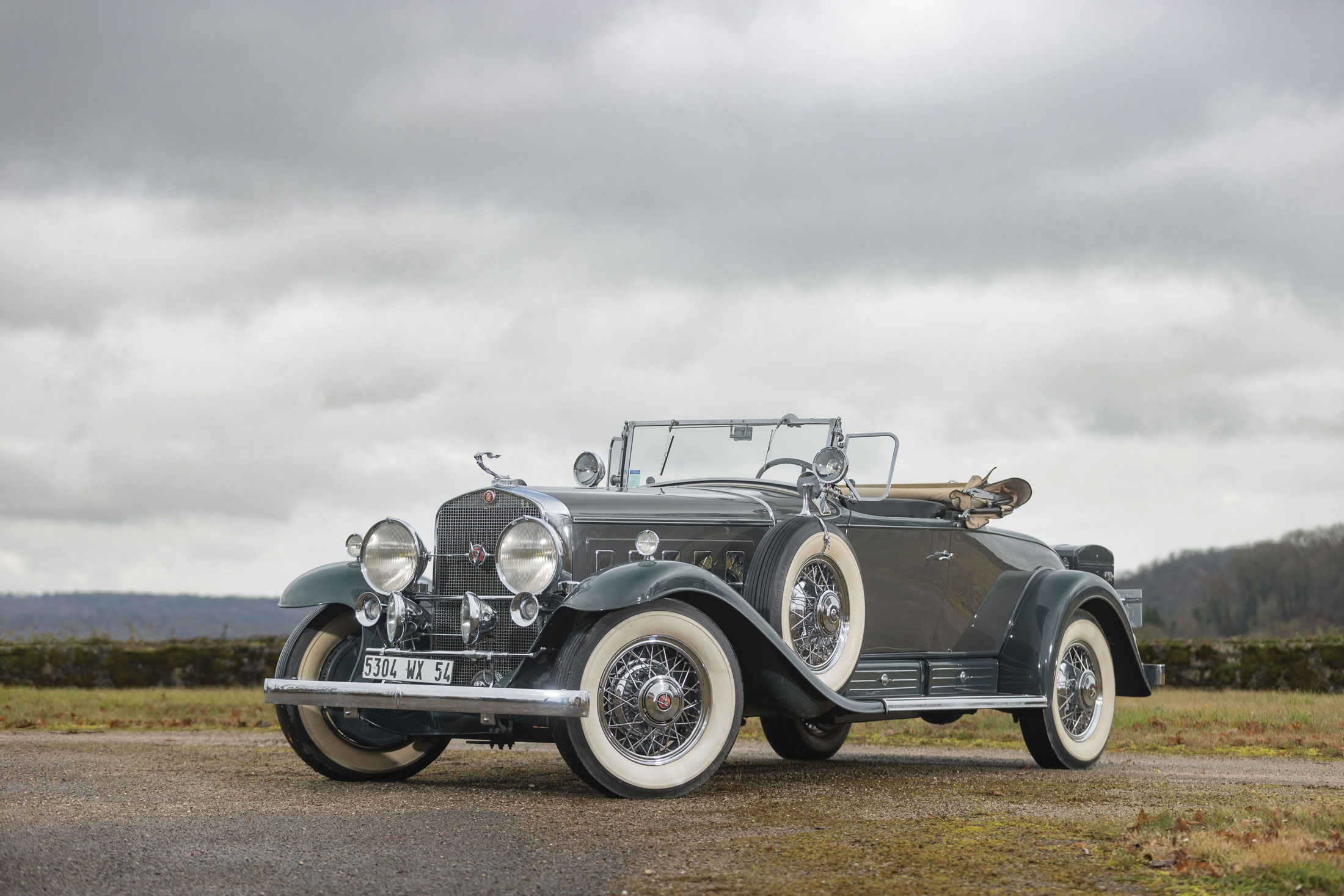SCM Analysis
Detailing
| Vehicle: | 1930 Cadillac V16 Roadster by Fleetwood |
| Years Produced: | 1930–31 |
| Number Produced: | 2,886 V16 models |
| SCM Valuation: | $1,105,000 |
| Tune Up Cost: | $3,000 |
| Engine Number Location: | Right side of crankcase |
| Club Info: | Cadillac LaSalle Club |
| Website: | http://www.cadillaclasalleclub.org |
| Alternatives: | 1932 Marmon Sixteen, 1930 Duesenberg Model J, 1932 Packard Twin-Six |
| Investment Grade: | C |
This car, Lot 339, sold for $338,386 (€307,400), including buyer’s premium, at Artcurial’s Paris sale on March 19, 2022.
It can be stated, with just a bit of a stretch, that Henry Ford was responsible for the creation of Cadillac. Ford had been the chief engineer for the Detroit Automobile Company that was formed in 1899, which produced as many as a dozen cars but closed its doors in late 1900. It was reorganized a year later as the Henry Ford Company, with Ford in charge of manufacturing. It lasted just three short months, as Ford had left the firm that bore his name and the directors decided to liquidate. They hired Henry Leland to appraise and dispose of the assets of the firm.
Starting over
Leland and his son Wilfred suggested that rather than going out of business, they should continue producing automobiles utilizing the engine they had developed at Leland & Faulconer Manufacturing for Oldsmobile. The three-horsepower engine had three times the power of the one the company had been using, while the parts were interchangeable and cost less to produce. The directors accepted the Lelands’ proposition and decided to continue, granting Henry Leland a seat on the board of directors. The firm was reorganized, and Cadillac arose from the ashes.
The new Cadillac was presented at the New York Auto Show in January 1903. When 2,286 orders were accepted by mid-week, it was announced that Cadillac was “sold out.” It quickly became apparent that production could not keep up with sales, and Leland was brought in to take over the entire operation.
The Cadillac Thirty was introduced in August 1908 and was proclaimed as “The Standard of the World,” with tolerances of 1/1,000 of an inch. It attracted the attention of William Crapo Durant, founder of General Motors. He wanted to add Cadillac to his enterprise due to its superior product and the sound profitability of the brand. The Lelands stayed on and were allowed to continue to run Cadillac without interference. However, after a dispute with Duran, they left in 1917 to form Lincoln.
A V16 dream
By the mid-1920s, Cadillac’s position as the luxury-car leader was being threatened by Packard, Stutz, Duesenberg, and several others. The once-premier brand had clearly lost its edge. (It has been suggested that this was due to the absence of Leland’s leadership.) Company officials realized they needed to take a drastic step forward.
Packard had earlier introduced a V12 engine, and Cadillac, in a secret lab, began developing a V16 engine. Few within Cadillac were privy to the details, and it was often referred to as a bus project. The resulting engine was essentially two straight-8 blocks put together, each with its own fuel and ignition systems. The 452-ci engine produced 165 hp and was smooth and quiet. Cadillac stated that you would hear nothing more than the spark of the contact points at idle. It is difficult to say that an engine is truly elegant, but the Cadillac V16 certainly was. The plug wires were even channeled in the valley between the cylinder banks and covered by a black enameled cover.
The Cadillac V16 was introduced at the New York Auto Show in December of 1929 and stunned the luxury-car market, catching competitors flat-footed. Sales far exceeded expectations, as by April 1930 the 1,000th V16 had been shipped. By June, that milestone had doubled. The high-end luxury-car market was limited, and the least-expensive V16 offered was the 4302 Fleetwood Roadster. Priced at $5,350, it fetched a tidy sum in the middle of the Great Depression. First-year sales were 2,887 units, but they fell from there, with only 150 produced in 1934.
Bought at a re-restoration price
The V16 roadster presented at Artcurial’s Rétromobile sale was offered with a limited catalog description. The car was stated to have won an unnamed concours in the U.S. in the 1980s, and it appears it was restored during that period. The accessories were not noted, but from the photographs we can observe Pilot Ray driving lights, sidemounts and a travel trunk. The restoration is almost 40 years old now, and regardless of how well maintained this Cadillac is, it would be unwinding a bit. It was also stated that the engine was not original to the car but was correct for a 1930 Cadillac V16.
On the surface, the price paid here was an exceptional bargain, as only 10 roadsters are known to still exist and several recent sales have been in excess of a million dollars. At Bonhams’ 2019 Amelia Island auction, a 1930 V16 roadster sold for $1.2m (SCM# 6897384), and RM Sotheby’s sold one at its 2017 Phoenix auction for $1.1m (SCM# 6817066).
The question here is can this car be re-restored without putting its new owner underwater? In any restoration there are unknowns. Rust and rot can hide in the most unlikely places, and demons lurk in the engine compartment. That being said, a quality restoration to concours standards should be feasible for $600,000 or so, and that makes this a promising acquisition. ♦
(Introductory description courtesy of Artcurial.)




